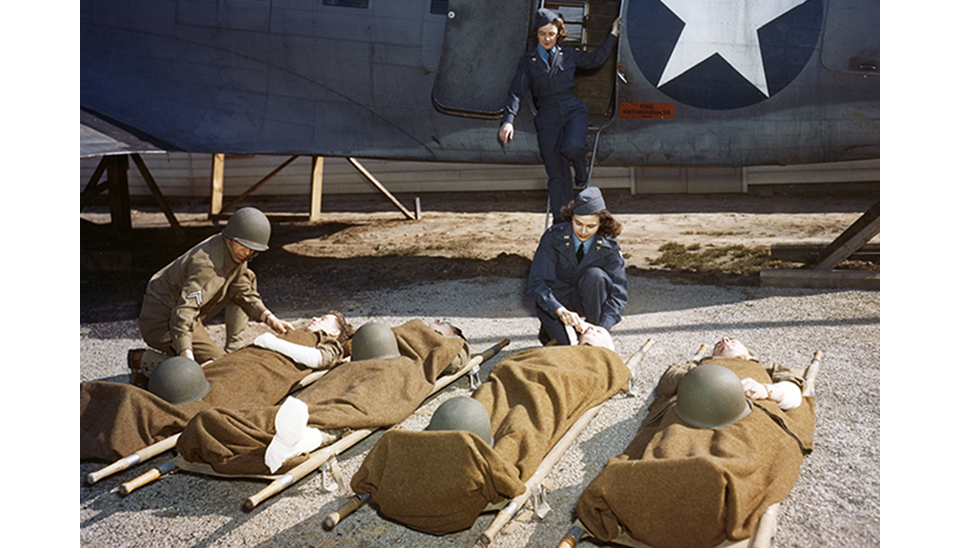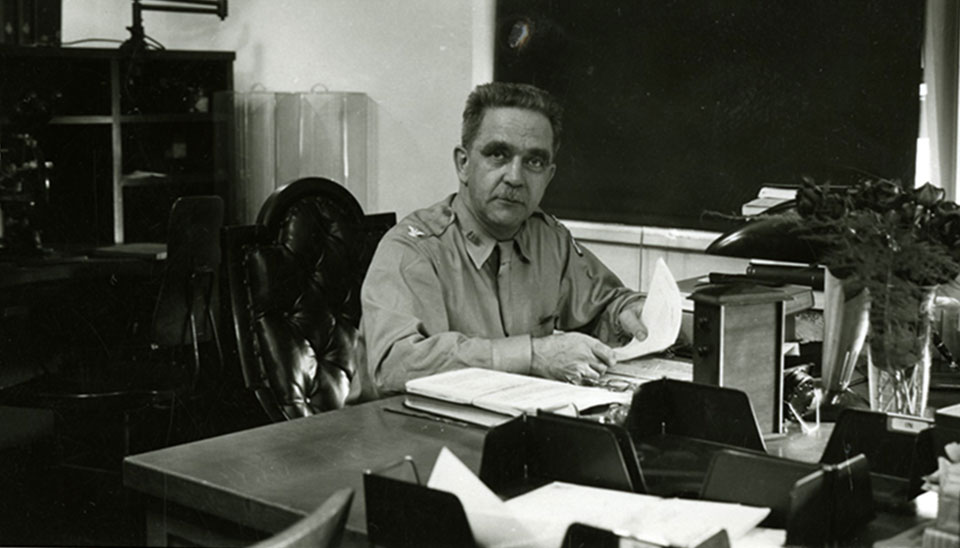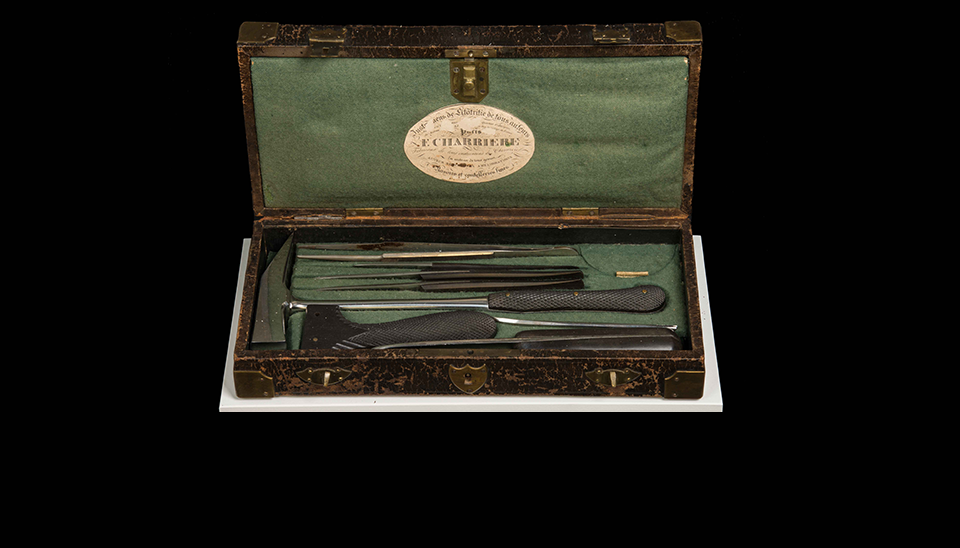In October 1923, the Federation of Ladies' Associations of West Japan wrote a letter to the nurses of the "American Relief Party" to express the nation's thanks to the nurses at a time of "national calamity." The letter expressed that America, "moved by the spirit of humanity has rushed relief measures with resources and did her best to help […] Japan was deeply impressed by the kind act of America and will remember it forever."
The letter, referring to the Great Kanto Earthquake, documents a tragedy that until recently was considered by many to be the greatest natural disaster in Japanese history. On September 1, 1923, an earthquake shook Japan at 11:58 a.m. A few minutes later, a 40-foot tsunami originating in Sagami Bay swept over the port city of Yokohama on the main island of Honshu, carrying thousands out to sea. The Great Kanto Earthquake measured 8.2 on the Richter scale.
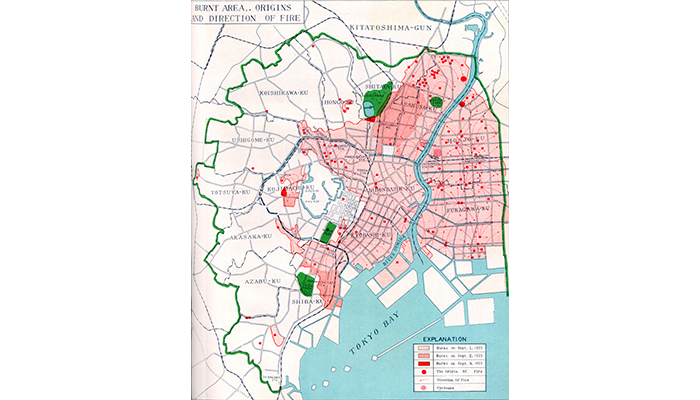
Illustration of the origins and extent of fire damage from the Great Kanto Earthquake, 1923. (Image courtesy of Tokyo Reconstruction Work, Tokyo Municipal Office, 1930)
When the government wireless station in Iwaki (Fukushima prefecture) received the faint signals from Yokohama in 1923, they alerted Hawaii, and from there news spread to the world. Within a week, an international relief effort was mobilized, led by the United States and including much of Europe, Russia, China, and India.
President Calvin Coolidge rallied donations through the American Red Cross, raising $12 million for victims. Tensions remained between the U.S. and Japan for a variety of reasons, but there was room for goodwill; America had not forgotten Japan's support during the San Francisco earthquake, and natural disasters don't observe borders. In a short time, dozens of warships filled Yokohama harbor, carrying food, supplies, and people offering assistance. Brig. Gen. Frank McCoy and Col. George Langhorne were tasked with coordinating the relief effort by the Secretary of War. Both men had been nearby in China during the earthquake. President Coolidge's statement to the American people:
Among the arrivals were two groups of women from the U.S. Army Nurse Corps. Accompanying Chief Nurse Reba Cameron on the USS Somme from San Francisco were Second Lieutenants Dorothy Proske, Betty L. Stevenson, Sarah I. Stevenson, Zora N. Ballard, and Mary I. Carney. They arrived with hospitals, infirmaries, and medical equipment, as well as 10 medical officers and 41 enlisted personnel. The names of the nurses who travelled from their duty station in the Philippines are unknown. They likely travelled on the U.S. transport Merritt with medical officers, Filipino medical personnel, American civilian physicians, and supplies.
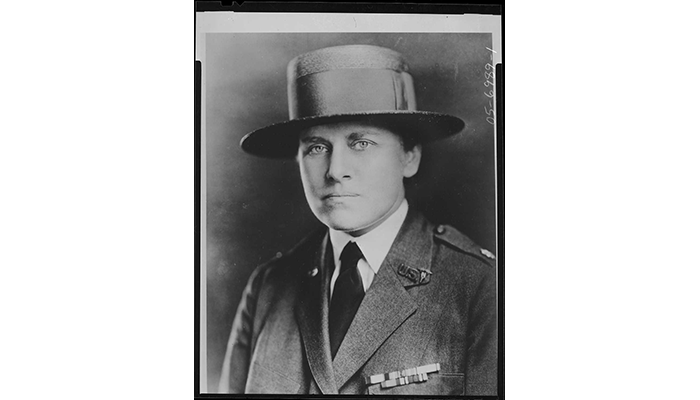
The head of the Army Nurse Corps, Julia Stimson. Stimson was in contact with Chief Nurse Cameron and the other nurses as they aided Japan during the aftermath of the Great Kanto Earthquake. (MIS 05-6989-1)
The goal of military personnel was to deliver supplies to embassies and the Japanese Relief Bureau. American troops would ready facilities and then train Japanese personnel in use as quickly as possible, transferring authority to them. Despite the tremors and lack of a water supply, the American team in Yokohama turned over the hospital to the Japanese 14 days after they arrived. They reboarded the USS Somme and went north to Tokyo where they resupplied St. Luke's Hospital, an American-run facility that treated local and foreign patients. They also established a 1,000-bed tent hospital named Bei-Hi.
During her time in Japan, Nurse Cameron wrote to the head of the Army Nurse Corps Julia Stimson, reflecting, "It is 100% destroyed…and all that remained…were blackened ruins, piles of brick and stone, an awful stench, big blue bottle flies buzzing over dead carnage, desolation immense and appalling, with death seeming the victor."
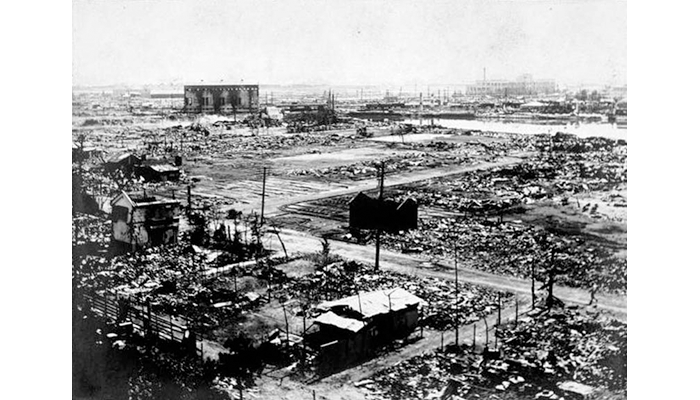
Aftermath of the 1923 Great Kanto Earthquake in Yokohama, Japan. View from Kotobuki Junior School in Yokohama. (Image courtesy of Yokohama Central Library)
In Yokohama, nearly 130,000 people had died and 90% of homes were damaged. In Tokyo, 350,000 homes were destroyed, rendering 60% of the city homeless. Final estimates cite more than half a million lives lost and homelessness of almost two million people. The mid-day timing of the earthquake proved devastating, as fires from cooking stoves and heavy winds combined to cause terrible destruction, including firestorms and a 300-foot fire tornado. Traditional wooden buildings were consumed by fire and the brick buildings constructed by westerners collapsed and crushed their occupants. In a short time, the metropolitan city of Yokohama, a center of trade, was burned to the ground.
Only one day after the turnover of Bei-Hi Hospital, most of the relief force departed. They had arrived to assist another nation reeling from catastrophe. American military disaster relief had been diplomatic and swift, as was necessary in order to be successful.
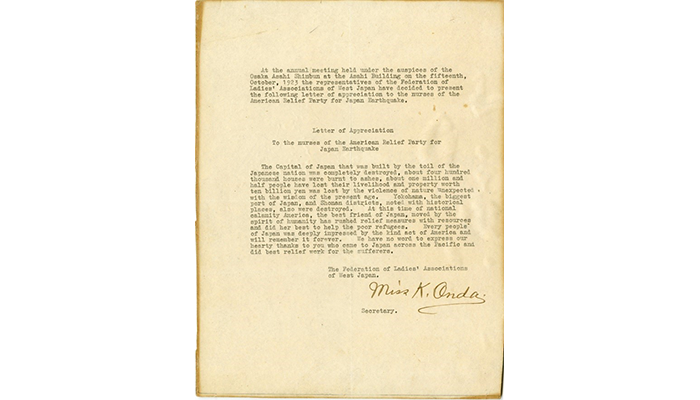
Translated letter from the Federations of Ladies' Association of West Japan thanking the nurses of the American Relief Party for their aid in the aftermath of the Great Kanto Earthquake. (M-360.145-2)
The letter from the Federation of Ladies' Associations of West Japan was sent a few days later. It would be shared with the whole profession when it was published in the February 1924 issue of the American Journal of Nursing. When the Americans departed, the Japanese government expressed its thanks to the whole relief team, but it is a notable testament to the work of the Army Corps nurses that their work was singled out for recognition. Though the good feeling between America and Japan would dissolve and culminated in the combat of World War II, the story of the Great Kanto Earthquake and the evidence offered by this letter reminds us of what military disaster assistance can offer and that humanitarian relief is never wasted.
Resources
Foster, Gaines M. The Demands of Humanity: Army Medical Disaster Relief. Washington, D.C.: Center of Military History, 1983.
Hammer, Joshua. "The Great Japan Earthquake of 1923." Smithsonian Magazine (May 2011). Accessed March 25, 2020.
Hammer, Joshua. "In Deadly Earthquake, Echoes of 1923," Opinionator, New York Times. March 13, 2011.
Hammer, Joshua. Yokohama Burning: The Deadly 1923 Earthquake and Fire That Helped Forge the Path to World War II. New York, NY: Simon & Schuster, 2006.
Sarnecky, Mary T. A History of the U.S. Army Nurse Corps. Washington, DC: Borden Institute, 2010.
Relevant Links:
Humanitarian Assistance and Disaster Relief
https://www.health.mil/Military-Health-Topics/Health-Readiness/Global-Health-Engagement/Humanitarian-Assistance-and-Disaster-Relief
Rationale for Military Involvement in Humanitarian Assistance and Disaster Relief
https://www.ncbi.nlm.nih.gov/pubmed/31806064


